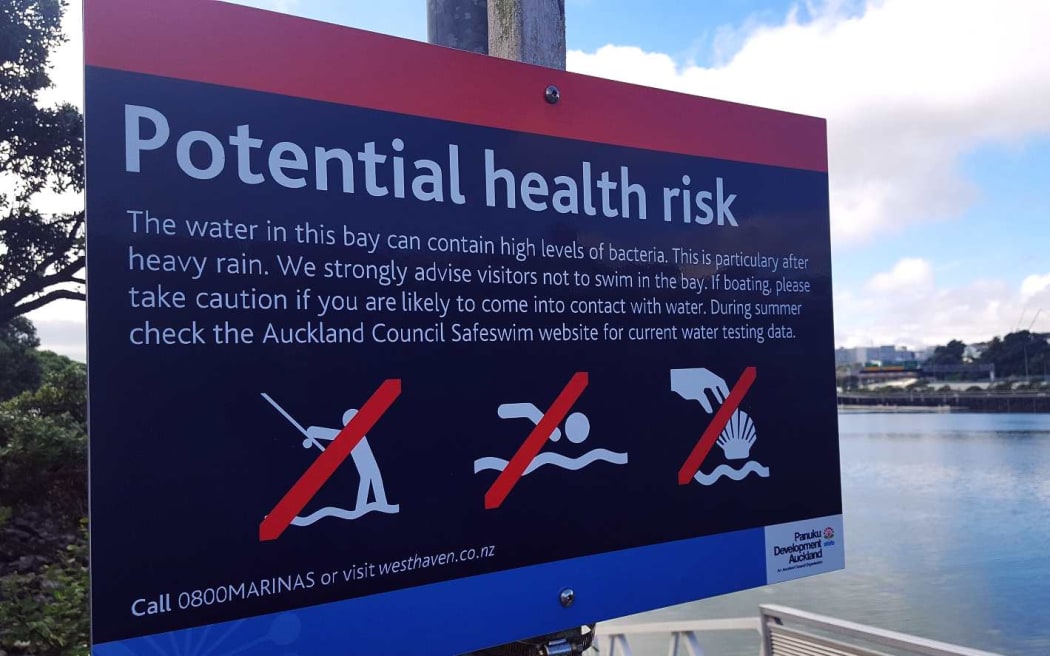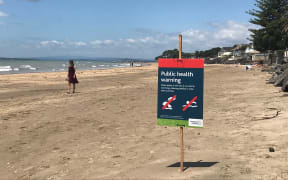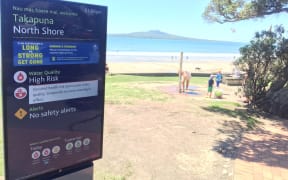A coalition of Auckland community groups is concerned that beaches with some risk of poor water quality may now get the green light from Swimsafe.

Up to 16 Auckland beaches have closed due to sewage overflows following rain Photo: (RNZ Insight/Todd Niall)
The Safeswim programme, a joint venture between Auckland Council, Surf Lifesaving Northern Region and Auckland Regional Public Health Service, monitors pollution at beaches and uses traffic light icons to rate their risk.
The Safeswim website, which launched last year, features a map of Auckland and coloured icons showing the water quality status of the city's beaches.
But the programme has now done away with the amber icon which signals there is some risk at a beach, leaving only green and red icons.
Only beaches that fail national water quality guidelines for swimming are given the red icon.
However, Stop Auckland Sewage Overflows Coalition and its spokesperson David Abbott is concerned poor water quality will not be signalled early enough.
"Green should be given only to beaches that simply have no risk at all.
"If there is a risk then it ought to be up as a warning and if they're uncertain about it but it's not absolutely clear then perhaps they should be keeping the amber."
The Coalition is made up of 20 community groups.
Safeswim's spokesperson Nick Vigor said the amber icon was removed because it was too confusing.
"People were confusing the amber with a non-compliant status so amber was always beneath the health guidelines and we listened to a lot of people [who] found that generally confusing and so now we have a situation where you'll simply see green or red.
"What was amber is now all in the green."
Mr Vigor was aware some people may view the change as removing information about risky water quality but said the aim was to simplify the system.
He said Safeswim added a black icon for very high risk beaches, showing when there was a wastewater overflow.
"Whilst we got rid of the amber to simplify things, we've increased the information at the other end of the scale. Where an overflow was simply red last season, the feedback we got is that people quite rightly wanted to understand when there was an actual wastewater overflow."
Last summer, a number of beaches were closed to swimmers because of pollution which also led to ocean sports events being cancelled, including six ocean swims in the Takapuna Beach Series.
From November to March, about 450 people turn up for the Takapuna Beach Series ocean swims on a Tuesday night.
Organiser Nick Carroll said this year they expected to run all the events because water quality was now being monitored along the beach rather than in one place.
"It showed most or all of the places along Takapuna beach it was perfectly safe to swim anywhere from one metre of depth onwards which is good.
"Some of our ocean swim courses go almost a kilometre offshore so it's pretty clean out there. It basically showed that any pollution did dilute after one metre of depth."
He said this week's swim started 150m further along Takapuna beach than planned because of pollution at one end of the beach.
"The north end was red but the centre and south was green which meant we could start in normal water because it was safe in close down at the centre of the beach.
"We have two buoys that we put in the water and then our participants will wait out there and we'll start them off."




